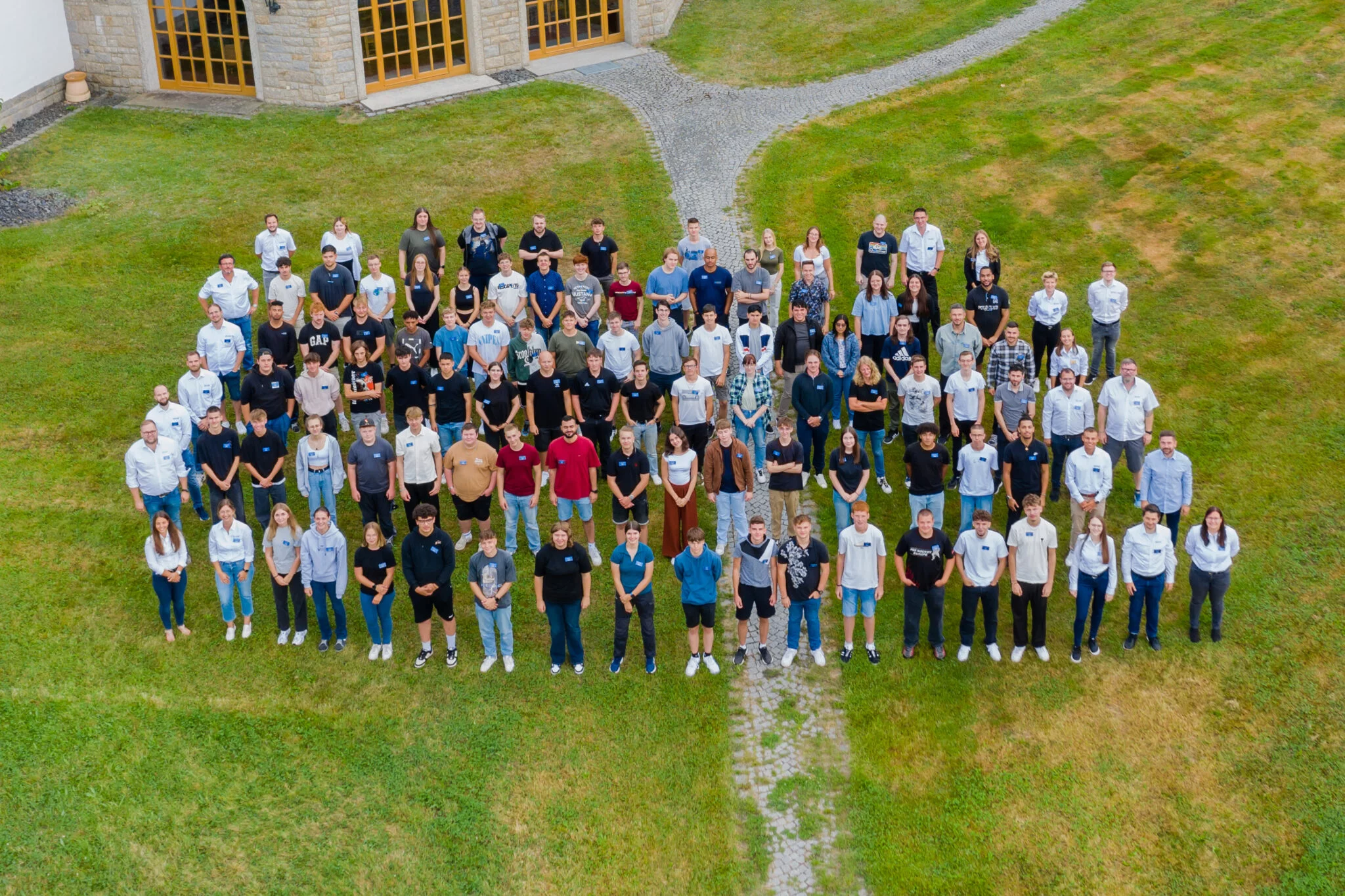The WITRON Group currently employs people from 109 nations worldwide. This includes more than 50 nations at the headquarters in the northern Upper Palatinate region, Bavaria, Germany. Intercultural teams are part of everyday life in the offices and production facilities in Parkstein, the international subsidiaries, or the OnSite service teams in the logistics centres implemented by WITRON worldwide. One of Fabian Rösel’s important tasks as Global Head of HR at WITRON is to work together with the responsible managers to support people from a wide variety of backgrounds in such a way as to create a high-performance and value-based community that works both professionally and personally.
“Holiday pictures sometimes make you think we are all wearing ‘Lederhosen’ here in Bavaria and drinking wheat beer at lunch,” laughs Fabian Rösel when asked about the company’s corporate culture. The attribution of the ‘Mystique company from Bavaria’ is no coincidence and the North American people in particular have shaped it to this day. “We now have more than 7,000 employees from over 100 nations. In 2014, we had 2,200 employees from 36 nations. We have changed a lot in ten years and the ‘Lederhose’ now only plays a very minor role. Also, it’s more of an Upper Bavaria thing, but that’s another cultural story,” he jokes.
In 2025, his main focus will be on passing on values such as the down-to-earth attitude and pragmatism of the family company founded by Walter and Hildegard Winkler – which already extend as far as Asia and Australia. “With so many nations in the company, we have to strike a balance and communicate our values. But we in Parkstein also have to keep learning.” By comparison: There are 195 nations worldwide. WITRON has implemented projects in almost 60 countries to date.
Rösel describes, for example, how the straightforward and direct communication of the Upper Palatinate people – for which WITRON is so highly respected among experts – differs from the more emotional and discussing-spirited French nature. “That sounds trivial, but it’s important to understand in everyday life.” Recognizing, respecting, and productively using these differences is one of the core tasks in managing international teams. Rösel is convinced of that.
Another example is the management of such teams. Managers must not only fulfill their role as professional leaders, but also act as bridge builders between cultures. This means that they have to understand and respond to the individual needs of their employees. In the USA, for example, it is common for managers to ask personal questions at the beginning of a meeting in order to establish a connection – a practice that could be considered as a waste of time in Germany but is essential for the working culture in the United States.
When expanding to Australia, Rösel and his colleagues took advantage of the intercultural diversity at the company and found employees from the United States who were quickly ‘in synch’ with their Australian colleagues, had already worked at WITRON for many years, and had adapted and were able to convey the Parkstein culture thanks to their close cooperation with colleagues from the Upper Palatinate. “This is the only way to successfully enter the Australian market,” explains Rösel.
In order to fully exploit the potentials of intercultural teams and at the same time master the challenges, he believes that a number of success factors are crucial:
1. Cultural awareness and training: A profound understanding of cultural differences is essential. Regular training, intercultural training and coaching sessions help employees and managers to become aware of these differences and use them appropriately.
2. Clear communication: Clear communication rules and expectations are particularly important in intercultural teams. Different interpretations of instructions or feedback can lead to misunderstandings, which can be avoided through transparent and open communication.
3. Flexibility and adaptability: Companies that operate in different countries must react flexibly to the respective local conditions and cultural characteristics. This is not only about linguistic adaptations, but also about considering typical national working methods and times.
4. Managers as cultural mediators: Managers in international teams must act as mediators between cultures. They should both represent their own cultural values and be open to new influences. At the same time, they should create an environment where employees feel comfortable and can express their ideas freely.
An outstanding example of WITRON’s intercultural work is the development project in the African country of Niger, which the company initiated together with an employee from the country who has been working in Parkstein for several years. The aim is to establish a technical school that offers young people a sound education in the field of automation technology. This initiative not only shows that the company is taking its intercultural approach one step further, but also that social responsibility and corporate goals can go hand in hand. “We don’t want to moan about bureaucratic hurdles because they are high. But we do it anyway. Today, service technicians from Niger are already traveling around the world for WITRON and getting projects up and running together with colleagues from many other countries”, explains Rösel proudly.
Similar news
Witron Special Intralogistics Day Wows Visitors at Parkstein HQ



